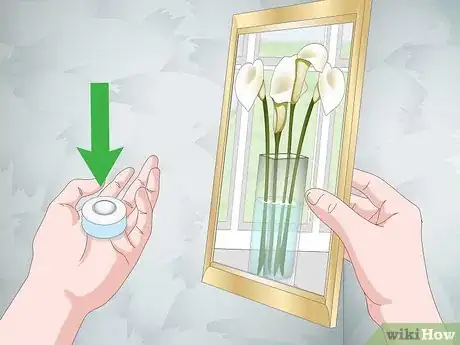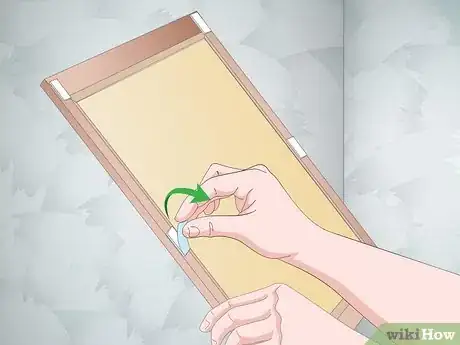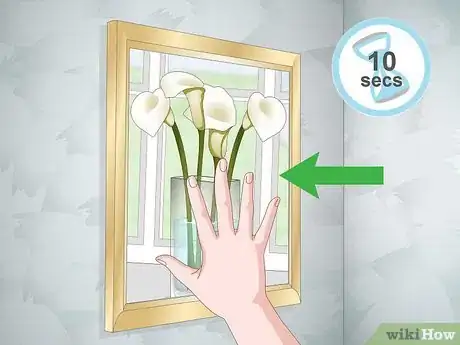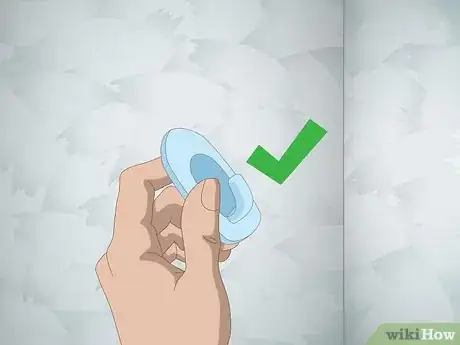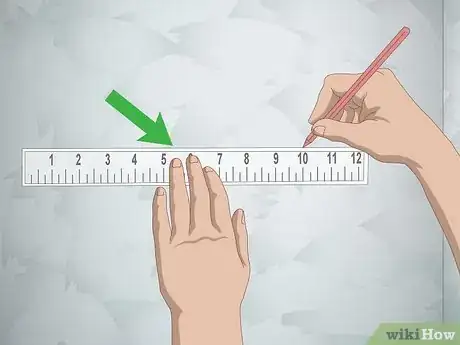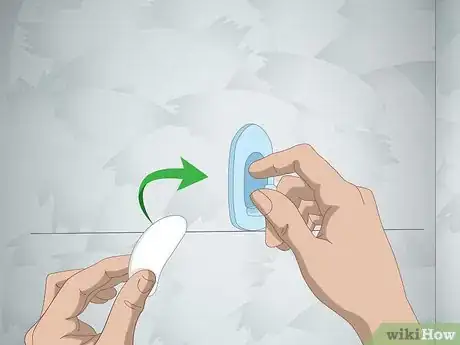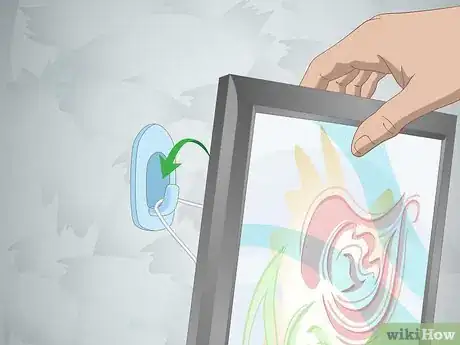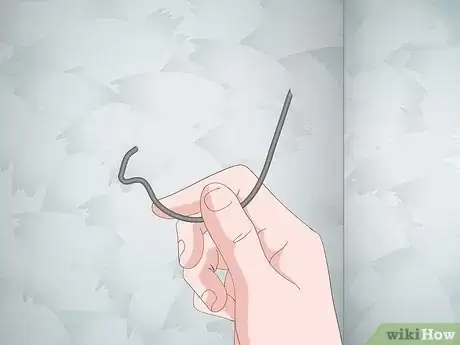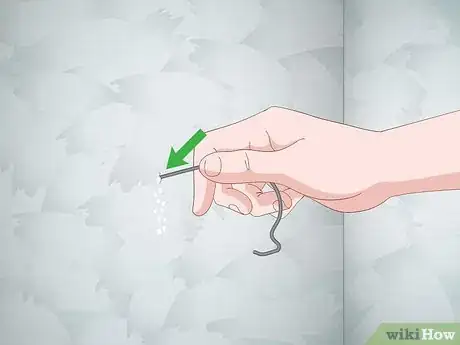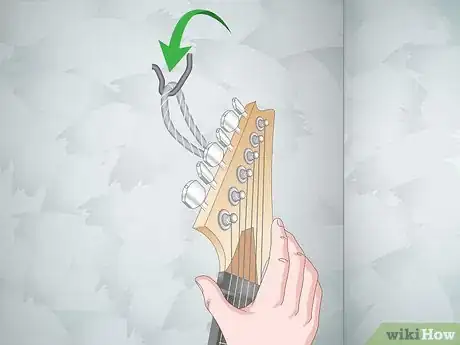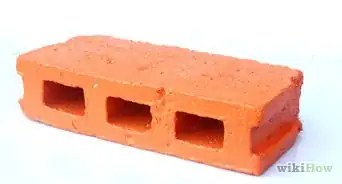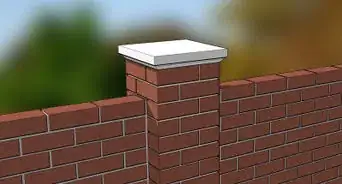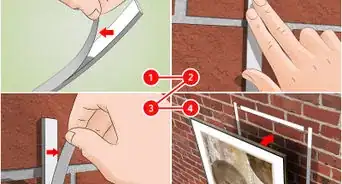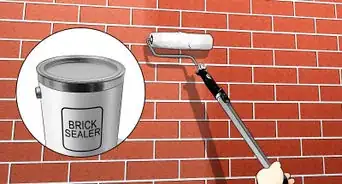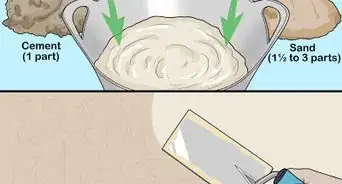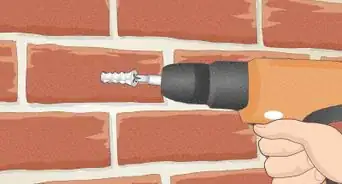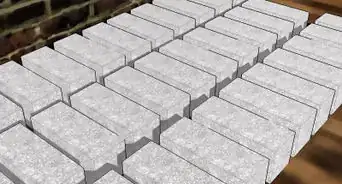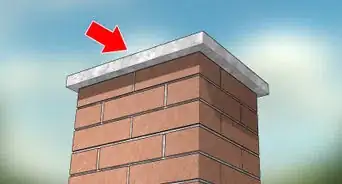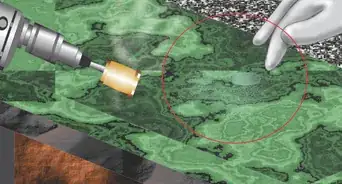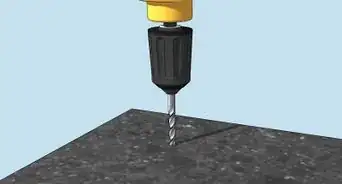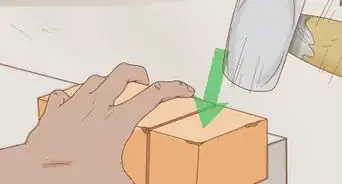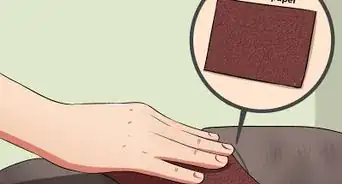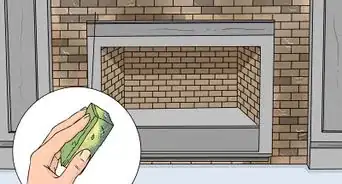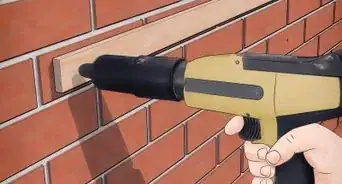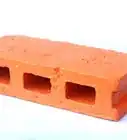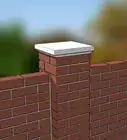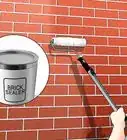This article was co-authored by Jason Phillip. Jason Phillip is a handyman specializing in mounting and hanging objects onto walls. With over five years of experience professionally mounting and installing objects through his company, Jason's Handyman Services, Jason's work includes working with mounting window AC units, designing art gallery walls, installing kitchen cabinets, and replacing light fixtures on drywall, brick, and plaster. He has been rated a "Top Pro" every year since 2016 by Thumbtack for being one of the highest-rated, most popular professionals on Thumbtack.
This article has been viewed 195,633 times.
Stucco or plaster walls are notoriously difficult to hang decor on. They can crack and crumble easily, especially under the strain of a power drill. But this doesn’t mean that you can’t decorate your walls! Whether you're putting up a frame, a clock, or another decorative object, hanging on stucco without using a drill is easy if you have the right materials.
Steps
Using Double-Sided Tape
-
1Use outdoor mounting tape to hang light frames and objects. You can hang light picture frames and decor on your stucco wall by using good quality double-sided mounting tape. There are many types of double-sided tape available, so be sure to select one that is designed for outdoor use, as these are often the strongest adhesives. This will ensure that the tape can withstand the elements and remain attached to your stucco wall.[1]
- Scotch and Gorilla Glue are two popular brands of double-sided tape. Check your local hardware store for mounting tape.
- You can also shop for double-sided mounting tape online.
-
2Clean the area with rubbing alcohol. It’s very important that the surface be clean and clear, because dust and dirt can affect how well the tape will stick to the stucco. Clean the entire area where you plan to hang something by scrubbing it with alcohol and allowing it to fully dry.[2]
- Use a rag, sponge, or brush to scrub the area well while you clean it.
- Make sure the area is fully dry before applying any tape!
Advertisement -
3Cut strips of tape and place them on the object you want to hang. Rather than applying the tape to the wall, attach one side of the tape directly to what you want to hang first. Peel the backing off of one side of the tape and attach to the object so that it is not visible when you hang it. Double sided tape is strong enough to hold up to 5 pounds (2.3 kg), sometimes more, but be sure to use enough to hold the object on the wall and distribute its weight evenly.[3]
- If you plan to hang a frame, apply the strips of tape to all corners of the frame.
- If you’re hanging an uneven object, apply the tape to all the areas that will contact the stucco and be sure to use enough tape to support it.
- Double sided tape comes in a variety of colors as well, which can make concealing the tape easier.
-
4Remove the backing of the tape and hang on the wall. Once you’ve applied enough tape to the frame or decor you plan to hang, you can remove the backing and expose the adhesive that will attach to the stucco. Slowly pull the paper backing off of the adhesive. The sticky surface of the tape will begin to dry and lose its strength after you remove the backing, so be sure you are ready to hang the object on your stucco wall before you remove the backing![4]
-
5Hold the object against the stucco for 10 seconds to make sure it sticks. Stucco is an uneven surface and can be stubborn and difficult for your tape to attach to. You’ll need to hold the object you wish to hang tight against the stucco for about 10 seconds to allow the tape to grip onto the ridges of the stucco. Then gently remove the pressure against the object.[5]
- You can lean your weight onto the object to apply pressure.
Using Adhesive Hooks
-
1Use strong adhesive hooks designed for outdoor use. There are a variety of adhesive strips with hooks that can be used to hang on stucco. Check the packaging for information on how much weight they can support. You should choose one (or more) that can support what it is that you plan to hang.[6]
- Adhesive hooks are great for hanging clocks, frames, and other objects that can be attached to hooks. For heavier or larger objects, you can use multiple hooks. If you plan to hang a painting or frame with a hanging wire, be sure to choose a hook that the wire will be able to fit onto.
- If you plan to hang on stucco outdoors, make sure you get strips that are rated for outdoor use and can withstand the elements.
- Don't use these adhesive hooks in an area with a lot of moisture or heat, like a bathroom or kitchen. This can weaken the adhesive, and the hook could fall off.[7]
- Keep in mind that even if they're not supposed to, adhesive hooks may peel some of the paint off the wall when you remove them.[8]
-
2Scrub the area clean with rubbing alcohol. It’s important that the surface is ready to have adhesive applied to it. Any dirt or residue can make it hard for the adhesive to stick to the stucco. Clean the area well by scrubbing it, using rubbing alcohol, and allowing it to fully dry.[9]
-
3Measure and mark where you want to apply the hooks. It is much better to apply the adhesive hooks right the first time than it is to remove them and reapply. You also may need to use the wire backing of a painting or use multiple hooks to hang on your stucco, so you’ll want to be sure you apply the hooks at the right spot. Use a pencil to mark where you want to attach the hooks.[10]
- If you are using multiple hooks, measure to make sure they’re even.
- You can use a ruler, tape measure, or leveler to check that the hooks are in alignment by holding it against the stucco and seeing if the places you marked are on a straight and even line.
-
4Remove the adhesive backing and attach the hooks to the stucco. Attach the hooks to places you marked. Be sure to check the directions on the packaging as there may be specific instructions on how to adhere your hooks to stucco. Adhesive strips are often difficult to remove, so it’s best to attach them correctly the first time!
-
5Hang your object on the hooks gently. The adhesive hooks may be strong enough to hold it, but you will want to gently attach your object to the hooks so that they don’t pop off of the stucco. If you are hanging a frame with a wire, slowly lower the wire backing onto the hook or hooks until the frame is firmly in place.[13]
Using Wire Hangers
-
1Use wire hangers to hang heavy frames. There are several brands of lightweight wire hangers that can be installed without drilling into the stucco. Be sure you choose a wire hanger that can penetrate plaster walls. The hangers are curved steel wires that can sometimes support over 100 pounds (45 kg). They are also easy to remove and leave only a small hole behind.[14]
- Hercules Hook and Monkey Hook are two brands of wire hangers that can pierce stucco.
-
2Mark where you want to place your hook with a pencil. If you plan to hang a frame with wire backing, make sure you mark where you want to insert your hook. You don’t want to make a hole in the plaster only to have to remove the hook and do it again. Larger frames may need more than one hook to support the wire backing, so be sure to measure so that the hooks are in an even alignment so your frame doesn’t lean![15]
- You can use a ruler or tape measure to make sure the hooks are in alignment.
-
3Puncture the wall with the sharp and straight end of the hanger. It may take some effort to pierce the stucco, but take care not to crush or bend the wire hanger. You can rotate your wrist to help the wire penetrate the plaster. Once you pierce the stucco, the wire should slide through easily.[16]
- You can avoid damaging the stucco by pushing the hanger in slowly. Sudden bursts can potentially crack the stucco.
-
4Push the hanger into the wall and twist until the hook is right side up. After you’ve inserted the straight end of the hanger, the wire should slide easily through the wall. Rotate the hanger so that the straight end of the hook is pressing against the inside of the wall.[17] It should slide in all the way to the hook of the hanger.
- The hook should settle into place and provide a strong hold.
- Make sure the hook is secure and stable in the stucco and isn’t wobbly.
-
5Hang the frame or object onto the hook gently. The hook should be strong enough to hold it, but if you knock the hook sideways, it will not support any weight. Lower the object or the wire backing of the frame slowly onto the hook until it is settled into place on the stucco.[18] Don’t let the object fall into place and risk knocking the hook out of alignment.
Expert Q&A
-
QuestionHow do you hang things on stucco without drilling?
 Jason PhillipJason Phillip is a handyman specializing in mounting and hanging objects onto walls. With over five years of experience professionally mounting and installing objects through his company, Jason's Handyman Services, Jason's work includes working with mounting window AC units, designing art gallery walls, installing kitchen cabinets, and replacing light fixtures on drywall, brick, and plaster. He has been rated a "Top Pro" every year since 2016 by Thumbtack for being one of the highest-rated, most popular professionals on Thumbtack.
Jason PhillipJason Phillip is a handyman specializing in mounting and hanging objects onto walls. With over five years of experience professionally mounting and installing objects through his company, Jason's Handyman Services, Jason's work includes working with mounting window AC units, designing art gallery walls, installing kitchen cabinets, and replacing light fixtures on drywall, brick, and plaster. He has been rated a "Top Pro" every year since 2016 by Thumbtack for being one of the highest-rated, most popular professionals on Thumbtack.
Handyman It depends on the weight of the object. If you can use a nail, I'd use a nail, but if you don't want to put a hole in the stucco, the only thing you can really do is to use an adhesive hook. However, they don't always work very well, especially for heavier objects.
It depends on the weight of the object. If you can use a nail, I'd use a nail, but if you don't want to put a hole in the stucco, the only thing you can really do is to use an adhesive hook. However, they don't always work very well, especially for heavier objects.
References
- ↑ https://h2obungalow.com/how-to-hang-outdoor-wall-decor-without-nails/
- ↑ https://h2obungalow.com/how-to-hang-outdoor-wall-decor-without-nails/
- ↑ https://h2obungalow.com/how-to-hang-outdoor-wall-decor-without-nails/
- ↑ https://h2obungalow.com/how-to-hang-outdoor-wall-decor-without-nails/
- ↑ https://h2obungalow.com/how-to-hang-outdoor-wall-decor-without-nails/
- ↑ https://www.todayshomeowner.com/how-to-hang-anything-on-anything/
- ↑ Jason Phillip. Handyman. Expert Interview. 2 July 2020.
- ↑ Jason Phillip. Handyman. Expert Interview. 2 July 2020.
- ↑ https://www.onegoodthingbyjillee.com/command-hooks-hanging-tips/
- ↑ https://www.todayshomeowner.com/how-to-hang-anything-on-anything/
- ↑ Jason Phillip. Handyman. Expert Interview. 2 July 2020.
- ↑ https://www.onegoodthingbyjillee.com/command-hooks-hanging-tips/
- ↑ https://h2obungalow.com/how-to-hang-outdoor-wall-decor-without-nails/
- ↑ https://www.todayshomeowner.com/how-to-hang-anything-on-anything/
- ↑ https://www.todayshomeowner.com/how-to-hang-anything-on-anything/
- ↑ https://www.homestoriesatoz.com/tips-2/tip-how-to-hang-something-heavy-with-minimal-wall-damage.html
- ↑ https://www.homestoriesatoz.com/tips-2/tip-how-to-hang-something-heavy-with-minimal-wall-damage.html
- ↑ https://www.todayshomeowner.com/how-to-hang-anything-on-anything/
